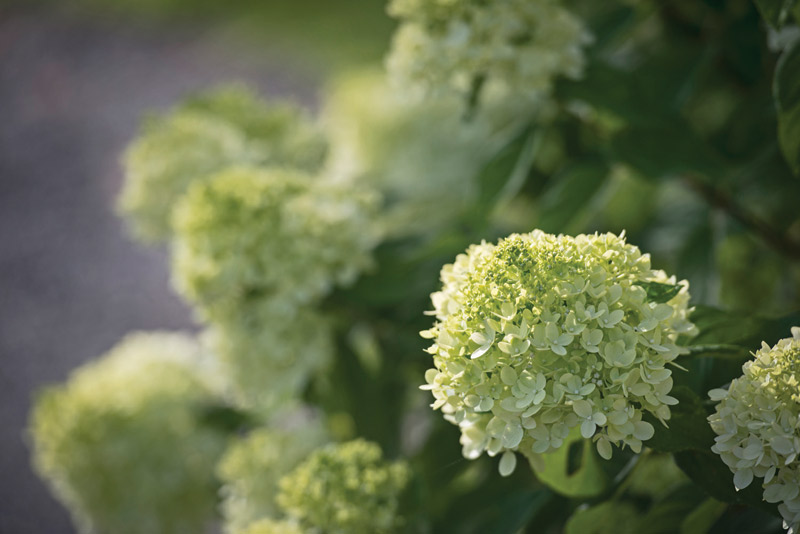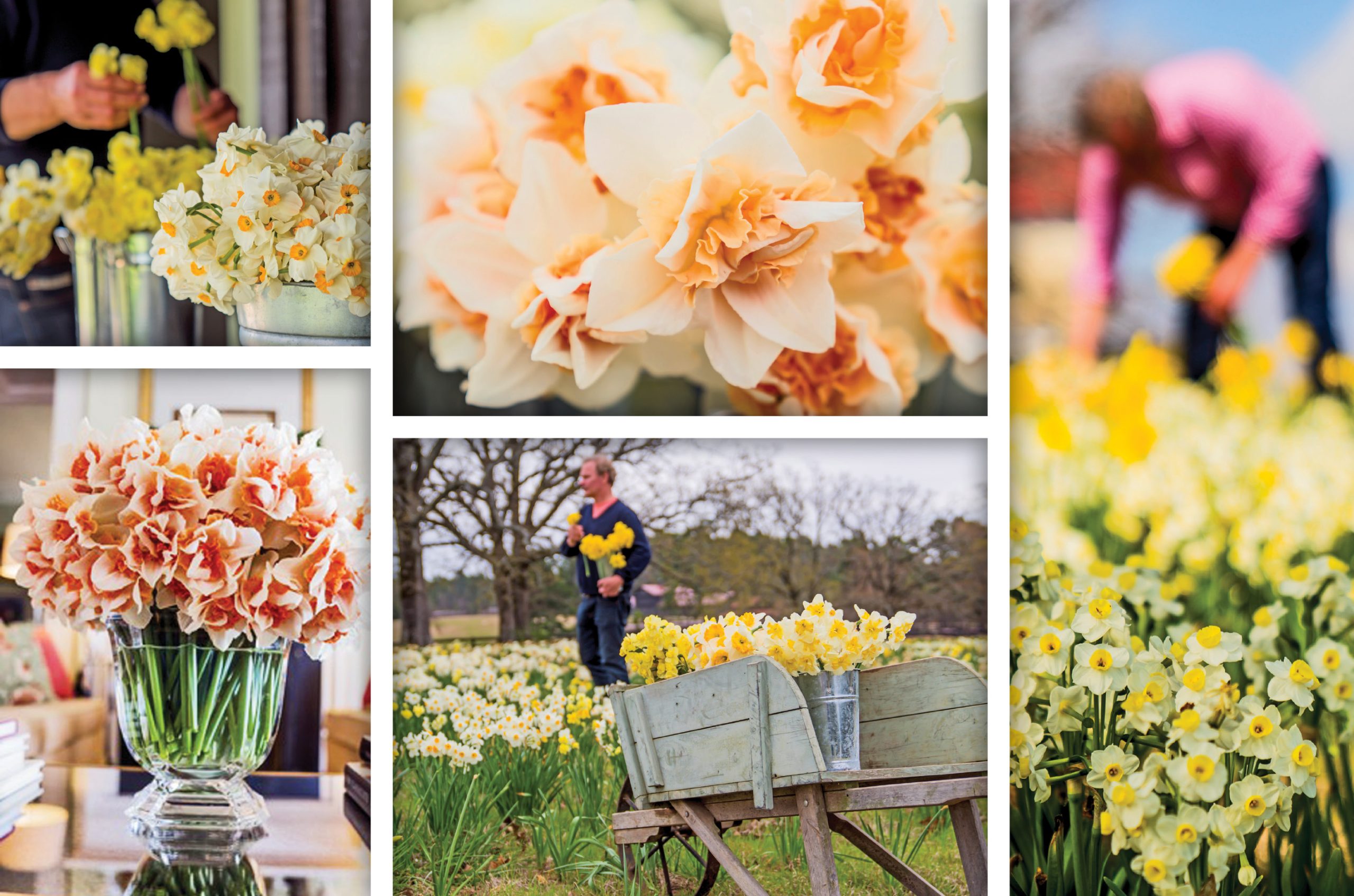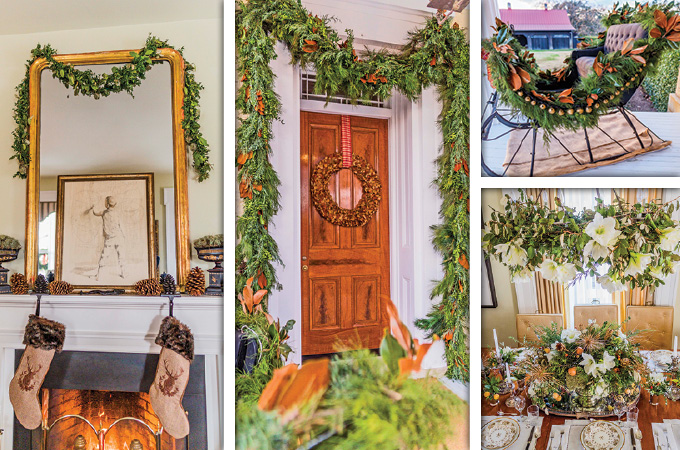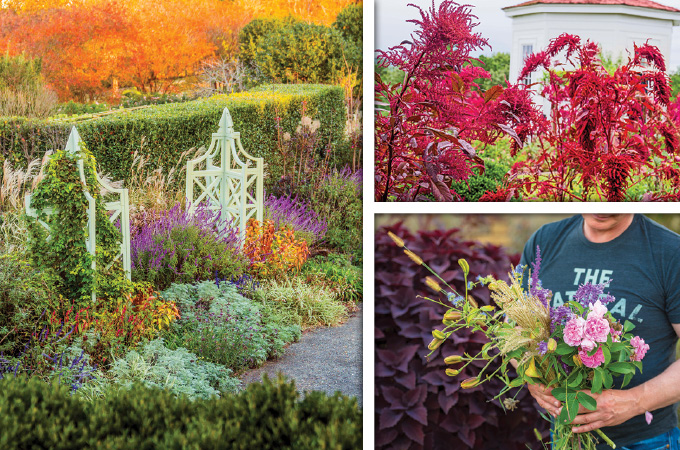I am hard-pressed to name a shrub that matches the hydrangea for drama, splendor and elegance. From subtle, starry-shaped lacecap flowers to dramatic, large globes, there is a hydrangea to fit almost any spot in the garden. With advances in plant breeding, selection has expanded, and today’s hydrangeas are versatile, dynamic and easy to grow. They all benefit from soil that is rich in organic matter, moist and well-drained. Adding compost or manure will help with moisture retention, and, ironically, drainage. While there are thousands of different hydrangeas, I’ve focused on four main species.
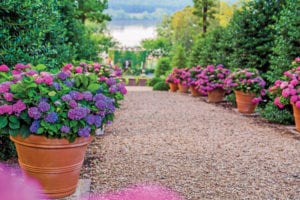 smooth hydrangea (h. arborescens)
smooth hydrangea (h. arborescens)
> Best in morning or dappled sun
One of the hydrangea varieties native to North America, it is a fairly care-free selection. Hardy in zones 3 to 9, ‘Annabelle’ is probably the most well-known arborescens with large, round, white mophead flowers. It grows to about 4 feet by feet, but blossoms will flop to the ground when it rains. Luckily, plant breeders have introduced an improved ‘Annabelle’ with thicker stems for more support, the ‘Incrediball.’ It makes a spectacular hedge, is great for cut flowers, and can be enjoyed as a specimen plant or placed in the back garden. New this year is the dwarf version of ‘Annabelle,’ the ‘Invincibelle Wee White.’ At just 2 feet by 2 feet, this little powerhouse gives you an abundance of white flowers in mini form.
This species blooms on new wood or the current season’s growth, so you don’t have to worry about improper pruning, hard winters or late freezes that might kill off precious flower buds.
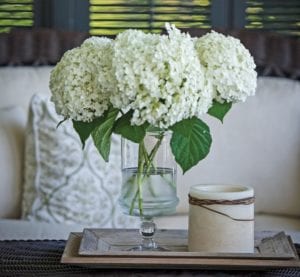 bigleaf hydrangea (h. macrophylla)
bigleaf hydrangea (h. macrophylla)
> Best in morning or dappled sun
With their intense blue or deep pink round, fluffy flowers, these are the holy grail of blossoms for many gardeners. The old classic ‘Nikko Blue’ and many others only develop flower buds on old wood, or growth from the previous season, so extremely cold temperatures can result in damaged buds and no flowers.
Plant breeders, though, have come through with new hydrangea varieties that bloom on both old and new wood. The leader in this field is the ‘Endless Summer’ series, including the original ‘Endless Summer,’ which blooms pink, purple or blue depending on your soil pH and measures about 4 feet by 4 feet. It’s hardy in zones 4 to 9. Its sister plant, ‘BloomStruck,’ has similar flowers on dark purple stems. More remontant varieties are coming out every year. I especially like ‘Let’s Dance Rhythmic Blue,’ which is 3 to 4 feet tall and wide and hardy in zones 5 to 9.
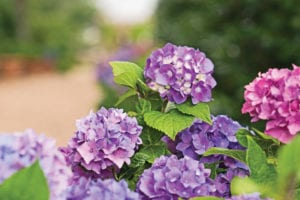 panicle hydrangea (h. paniculata)
panicle hydrangea (h. paniculata)
> Best in full or part sun
Gardeners with full sunlight should consider the paniculata hydrangeas, so named because of their panicle-shaped flowers, which open a creamy white and age to a dusty rose as the summer progresses. Because they bloom on the current season’s growth, paniculatas are reliable, hardy bloomers.
One of the best known and hardest working paniculatas is ‘Limelight,’ hardy in zones 3 to 9 and reaching up to 8 feet tall. If that’s too much hydrangea for you, consider ‘Little Lime,’ a dwarf version that you can keep to about 3 feet tall with late winter or early spring pruning. Other dwarf varieties worth considering include ‘Bobo’ and ‘Little Quick Fire,’ both hardy in zones 3 to 8.
 oakleaf hydrangea (h. quercifolia)
oakleaf hydrangea (h. quercifolia)
> Best in morning or dappled sun
Oakleaf hydrangeas are the other species native to North America, making them low-maintenance, reliable and outstanding in beauty. They also are true four-season shrubs, with oak leaf-shaped foliage in spring; large, white panicle flowers in the summer that age to a rosy hue; beautiful fall foliage; and an ornamental peeling bark visible in winter. Because these have woody stems, pruning is not recommended.
The true oakleaf species can reach 8 feet or taller and just as wide, so it’s not for the faint of heart. More manageable oakleaf hydrangeas include ‘Snow Queen’ and ‘Alice,’ both about 5 feet tall and hardy in zones 5 to 9. Dwarf versions include ‘Pee Wee,’ ‘Sikes Dwarf’ and the relatively new ‘Ruby Slippers,’ which reaches about 4 feet tall and wide, hardy in zones 5 to 9.
P. Allen Smith is an author, conservationist and TV host of Garden Home on PBS and Garden Style (check your local listings). He uses his Arkansas home, Moss Mountain Farm, to promote the local-food movement, organic gardening and the preservation of heritage poultry. For tours of the farm, visit pallensmith.com/tours.





